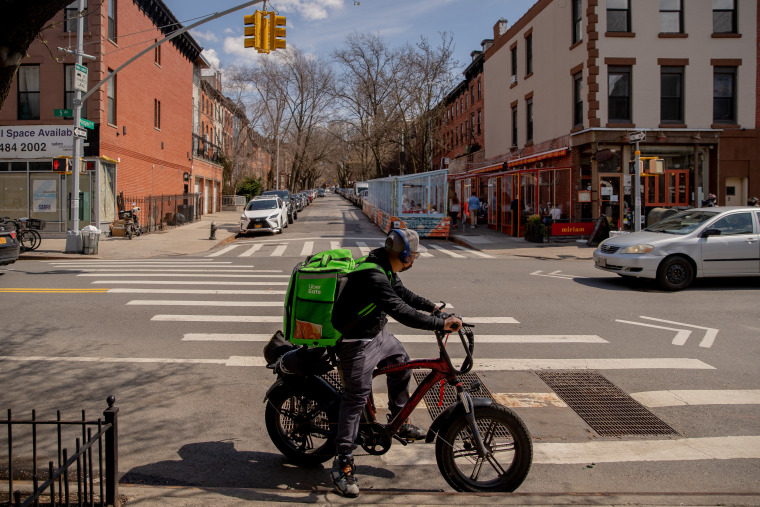By Rob Wile
America's obsession with food delivery appears to be over — and company stocks are taking a hit.
After reaching a high of $246 in November, shares of DoorDash have plunged 62% to $89 per share.
In the same period,
Uber shares have fallen 29%, from $45 to $31
.
[Uber raises prices in the US due to the increase in the cost of gasoline]
Much of this decline can be explained by the stabilization of COVID-19 cases.
Although apps experienced explosive growth during the early phases of the pandemic as consumers stayed home, analysts say that growth was not sustainable.
However, the decline of these companies has been quite sharp, as some Americans have become increasingly budget-conscious amid rising inflation and rising fuel costs.
Alert of a new scam to Uber drivers by alleged representatives
Jan. 18, 202202:33
“It was inevitable that they would start to shrink as people went back to dining at home
,” says Rich Shank, vice president of research and insights at Technomic, a consultancy that works with the restaurant industry.
[A young woman left her home in an Uber and died after being dropped off at a hospital. New Orleans authorities investigate]
There has also been a return to restaurants.
Data from Technomic reveals that
the share of in-store dining hit a post-pandemic high in the first quarter of 2022
, while the share of food deliveries via apps fell to its lowest level since the fourth quarter of 2020.
The drop in app usage can also be attributed to fees, tips and rising food prices, which are starting to drive some customers away, according to Shank.
“The quota shift toward out-of-store orders appears to have leveled off,” Shank said, referring to orders placed on food delivery apps.
"The odds of it slipping a bit more are pretty good, given the inflationary pressures consumers face and the higher fees they incur through third-party apps," he said.
An Uber Eats delivery driver rides an electric bike through the Park Slope neighborhood in New York's Brooklyn borough on Friday, March 26, 2021. Amir Hamja/Bloomberg via Getty Images
The biggest victim among apps has been GrubHub
.
On Wednesday, its parent company, Netherlands-based Just Eat, announced it was exploring the sale of the former delivery app.
[The credit score is key to obtaining a lower mortgage interest. So you can improve it]
Bloomberg reported that orders on Just Eat platforms saw a sharp decline in the US in the first quarter, as jurisdictions such as New York imposed caps on fees and a continued slowdown in orders from workers returning home. the office.
That's another factor weighing on apps: Many workers are still working from home, likely finding alternative ways to get lunch compared to pre-pandemic delivery orders.
"It's starting to look a little more like pre-pandemic times, but it's nowhere near what it was before," says Shank.
“Weekday lunches come up again when people are in the office.
But many workers are still not in the office five days a week,” he explained.
Delivery app companies have long been crunching the numbers to get a return, according to Raj Joshi, vice president and senior credit analyst at Moody's.
As a result, many are now seeking a balance between cutting costs and expanding into other lines of business, such as grocery and package delivery.
But it's not yet clear whether these strategies will work, he said.
[Netflix shares fall 25% after news that the service lost 200,000 subscribers in three months]
“The industry is clearly in a phase of evolution
,” said Joshi.
The upshot of these trends: Larger restaurants could emerge stronger than mom-and-pop restaurants, which won't be able to afford the fees that delivery apps will continue to charge, and could abandon the platforms altogether.
This is in addition to managing rising labor and fuel costs.
“The big chains are in a better position to manage these things because they have more resources and scale,” said Joe Guszkowski, senior editor of Restaurant Business magazine.

